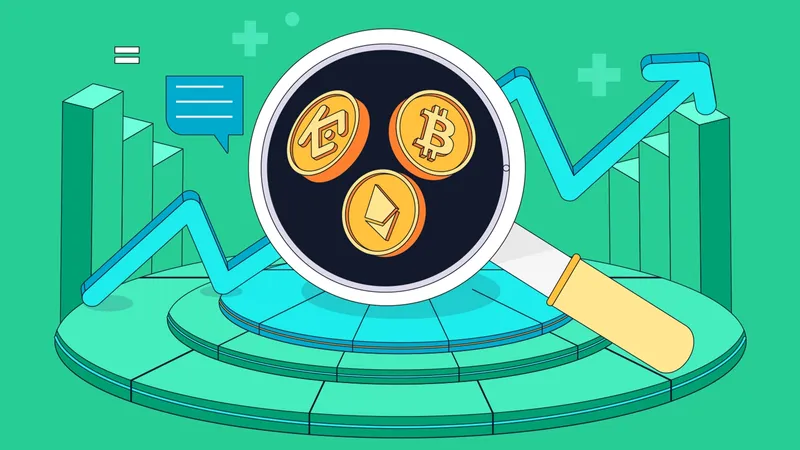仮想通貨市場では、市場の動向が急速に変化するため、最適なタイミングで市場に参入するのは困難です。しかし、仮想通貨トレーダーは、市場が上昇トレンドに入る前に仮想通貨を購入したり保有量を増やすための適切なタイミングを見つけるための多用途な指標ツールキットを持っています。その指標の1つが「ゴールデンクロス」であり、上昇トレンドが確立される前に市場に参入するのを助ける貴重なモメンタム指標です。
この記事では、ゴールデンクロスの詳細と、他の テクニカル分析 ツールと組み合わせてどのように活用できるかを解説します。
ゴールデンクロスとは何ですか?
ゴールデンクロスは、株式や商品取引で広く使用されている技術的なシグナルであり、弱気市場 から強気市場への重要な転換を示します。この転換は、短期(通常50日移動平均線)と長期移動平均線(通常200日移動平均線)の交差によって特定され、その後トレンド反転が確認されます。この指標は市場の上昇トレンドの可能性を示唆しており、トレーダーにとって買いの機会を示します。
変動の激しい仮想通貨市場では、ゴールデンクロスの形成は強気市場トレンドの始まりを示す可能性があり、さらに買い圧力が強まる前に 仮想通貨を購入 するタイミングをユーザーに知らせるシグナルとなります。ゴールデンクロスを見つけるには、短期と長期の両方で移動平均線の交差を取引チャート上で探します。特に重要なのは、50日移動平均線と200日移動平均線です。
50日移動平均線: これは、短期市場トレンドを特定するためにトレーダーが監視する重要な短期移動平均線です。過去50日間の資産の平均終値を示します。この平均線が長期の200日移動平均線を上回ると、一般的には強気のサインと見なされます。これは短期市場センチメントがより前向きであり、買い活動が増加する可能性を示唆します。
200日移動平均線: 一方で、200日移動平均線は重要な長期トレンド指標です。過去200日間の平均終値を反映しており、長期間にわたる市場の全体的な健全性を判断するために使用されます。この線が上昇している場合、長期的な上昇トレンドを示し、下降している場合は長期的な下降トレンドを示します。50日移動平均線がこの線を上回ると、長期市場トレンドが弱気から強気に反転する可能性を示唆します。
取引チャートでゴールデンクロスを見つける方法
出典: Coindesk
2024年1月10日にSECが11種類のスポット ビットコインETF を承認したこと、そして今後の ビットコイン半減期 イベントが、ビットコインの価格を最近の週足チャートでゴールデンクロスを超える水準まで押し上げました。2023年3月にはビットコインの50週平均が200週平均を下回りましたが、それ以降は スポットビットコインETFの承認 への高い期待と共に勢いを増してきました。
当初、市場は比較的安定しており、ビットコインの価格は30,000ドルから35,000ドルの間で推移していました。50週にわたり、ビットコインの平均終値は徐々に増加し、50週移動平均線の上昇として反映されます。同時に、長期的な価格トレンドを反映する200週移動平均線は比較的フラットまたはわずかに上昇します。
ゴールデンクロスの形成は、ビットコインに対する 市場センチメント が弱気(または中立)から強気に移行する可能性を示唆します。このパターンを認識したトレーダーや投資家は、ビットコインを 購入 するのに適したタイミングとして捉え、長期的な価格上昇トレンドを期待することができます。しかし、この指標は過去のデータに基づいているため、将来の価格動向を保証するものではなく、より包括的な市場分析の一部として考慮することが重要です。
ゴールデンクロス vs. デスクロス:主な違いとは?
ゴールデンクロスとは対照的に、デスクロスは短期移動平均線が長期移動平均線を下回る弱気のシグナルであり、下降トレンドと悲観論の増加を示します。
ゴールデンクロスは通常、下降トレンドから市場が回復し始める上昇トレンドの初期または中期段階で形成されます。一方、デスクロスは通常、強気市場の活動後に下降トレンドの初期または中期段階で形成されます。
FTX崩壊の際、2022年12月のビットコイン週足チャートにはデスクロスが形成され、大量の売り圧力を示しました。
出典: Coindesk
ゴールデンクロスを活用する際の注意点
ゴールデンクロスを仮想通貨取引に活用する際には、以下のポイントを考慮することが重要です:
-
市場状況の把握: 広範な市場状況を評価しましょう。ゴールデンクロスは孤立した指標ではなく、世界的な経済状況、規制ニュース、仮想通貨業界の重要なイベントなど、外部要因の影響を受ける可能性があります。
-
取引量の確認: ゴールデンクロスのシグナルを評価する際は、取引量の変化を確認しましょう。取引量が大幅に増加した場合、市場のコンセンサスが強まっていることを意味し、ゴールデンクロスの信頼性が高まります。また、対象となる仮想通貨の取引所への流入と流出を監視することも重要です。取引所への流入は売り圧力の可能性を示し、流出は蓄積を示唆します。これらのパターンを分析することで、ゴールデンクロスが暗示する強気トレンドに対する市場の支持を把握し、より信頼性の高い取引判断が可能になります。
-
追加指標との組み合わせ: ゴールデンクロスだけに頼らず、 RSI、 MACD、または ボリンジャーバンド などの他のテクニカル指標を活用して、より包括的な分析を行いましょう。
-
誤シグナルを警戒: ゴールデンクロスが時に誤ったシグナルを示すことがあります。予想された強気トレンドが実現しない場合にも備えておきましょう。
-
リスク管理: 強力な リスク管理戦略 を実行しましょう。 ストップロス注文 を使用し、失っても問題のない資金だけを投資してください。
-
後行指標であることの理解: ゴールデンクロスは後行指標であり、過去のデータに基づいています。ゴールデンクロスの過去のパフォーマンスを研究することはできますが、過去のパフォーマンスが将来の市場トレンドを保証するものではないことを理解しましょう。市場のダイナミクスは変わる可能性があり、過去に機能した方法が将来も有効であるとは限りません。
結論
結論として、仮想通貨取引におけるゴールデンクロスは、短期移動平均線(例:50日SMA)が長期移動平均線(例:200日SMA)を上回る技術的解析シグナルであり、強気市場トレンドへの移行の可能性を示唆します。貴重なツールでありながら、その効果は市場状況の分析、取引量の確認、および他のテクニカル指標との組み合わせに依存します。
トレーダーは、その後行性を考慮し、過去のパフォーマンスが将来のトレンドを保証しないことを認識する必要があります。さらに調査を行い、仮想通貨市場のダイナミックで非常に予測不可能な性質に適応した戦略を採用することが重要です。
